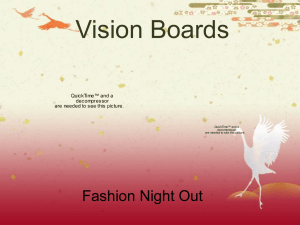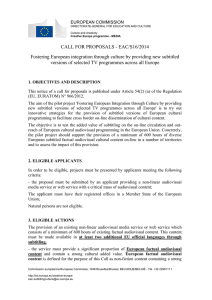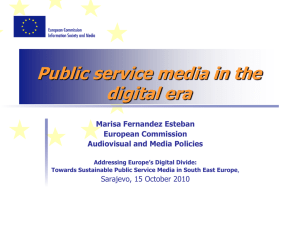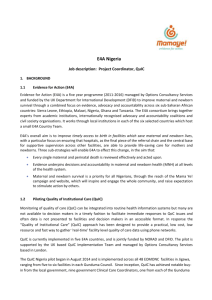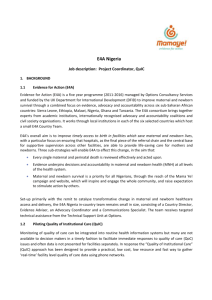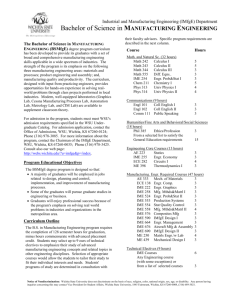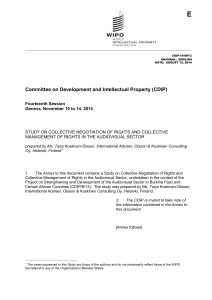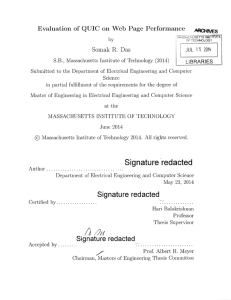Informative Speaking - Marlington Local Schools
advertisement
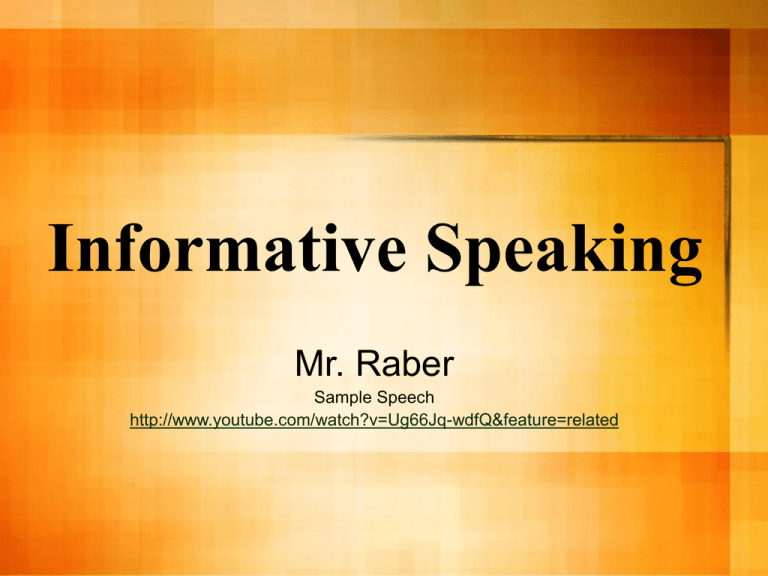
Informative Speaking Mr. Raber Sample Speech http://www.youtube.com/watch?v=Ug66Jq-wdfQ&feature=related What is an Informative Speech? An INFORMATIVE SPEECH presents information in ways that will help listeners understand and remember what they are hearing. Informative Speech No matter what you are informing your audience of, CONTENT is important. However, HOW the content is delivered is just as important! Remember… Speeches are delivered LIVE Thus, you only have one chance to tell and show the audience what you want them to know/understand They cannot rewind you/your speech back or turn the page back to review your presented information Topic Selection: Since this is an informative speech, you should choose a topic that interests you and you are familiar with. Hence, this why we answered the three questions on the back board Qui ckTi me™ and a decompressor are needed to see this pictur e. Topic Selection: Also, remember your speech only needs to be FIVE MINUTES long… QuickTime™ and a decompressor are needed to see t his picture. Thus, you should not choose a topic that is too large/broad that it cannot be covered/ explained effectively in such a short speech (The maximum time a speech can be before a student loses points is SEVEN MINUTES) Your Speech Type: Your speech is going to be an EXPOSITORY speech An expository speech gives information about a specific subject Example: How a gasoline engine works Quic kT ime™ and a dec ompress or are needed to s ee this pi cture. More about topic selection: You should analyze your audience and tailor your speech to their interests and previous knowledge. Remember: Your audience members are your classmates; plan accordingly. QuickT ime™ and a decompressor are needed to see this picture. More about topic selection: If you think your audience already knows a lot about your topic, try to present an interesting perspective or little known facts. For example, instead of informing your audience about how a person plays baseball, inform them of how visionimpaired people play baseball Basically… If you think your topic/speech is going to give your audience a “DUGH” reaction, try a different perspective, approach, or topic. DUGH QuickTime™ and a decompressor are needed to see this picture. Speech Organization The main parts of good speech are the same as the main parts of a good _____________. ESSAY Speech and Essay Three Main Parts: 1. Introduction 2. Body 3. Conclusion Introduction of Speech: Capture your audience’s attention with an interesting statement or question. 2. Gain the listener’s interest by relating the topic to their experiences/life 3. State the goal or purpose of your speech (Thesis) 1. Body of Speech: There are three main ways you can organize the main points of your speech: 1. Chronological Order 2. Logical Order 3. Spatial Order Main Point Organization For an EXPOSITORY speech you are either going to use logical or spatial order. Logical Order: You are going to use this method of organization if you are supplying basic information on a subject. Logical order is ordering your main points by GROUPS or CATEGORIES. Spatial Order: You are going to use this method of organization if you are describing an arrangement. For example, if you are informing an audience about the arrangement of pilot controls in an airplane. None of This!!! QuickTime™ and a decompressor are needed to see this picture. Remember… Speech & Essay Three Main Parts: 1.Introduction 2.Body 3.Conclusion Conclusion of Speech: Two main functions of a good conclusion: 1. Refer to your introduction and summarize your main points; this kind of overview is an especially important way to reinforce your message for listeners End with a quotation, an anecdote, or thought-provoking final statement 2. Ok… Now that you have the content and organization of your speech down… It is time to discuss the DELIVERY of your speech Speech Delivery: HOW you will present your information Speech Delivery: You will give your speech EXTEMPORANEOUSLY Speech Delivery: EXTEMPORANEOUS An extemporaneous speech is outlined and rehearsed but not memorized Speakers may use an outline or note cards Most professional speakers use this method in order to seem more spontaneous and to adapt their presentation according to their audience’s various reactions BEWARE: You may use note cards or an outline as CUES or tools to hold phrases or quotes you will state WORD-FOR-WORD in your speech HOWEVER: DO NOT STAND UP IN FRONT OF THE CLASS AND CONSTANTLY LOOK DOWN AT THEM…AND MOST IMPORTANTLY… DO NOT READ THEM Speech Delivery: You may wish to use some type of mnemonic, memory, devices to help yourself and your audience remember your main points: Parallel structure 2. Acronyms 3. Images 1. Speech Delivery: What does the following phrase mean? “I see what you say, I hear what you look like” Phrase Meaning: It means that it is what the listeners SEE and HEAR that affects how they think about the content of your speech. Thus, you do not want to look appalling/inappropriate while giving your speech And, you do not want anything dealing with your voice to be distracting Speech Delivery: Thus, there are some DELIVERY STRATEGIES that can make your speech more effective and successful Delivery Strategies: Use Your Voice Effectively This means that you should vary your tone, rate, and volume to add emphasis and interest to your speech. Delivery Strategies: Enunciate Clearly Speak distinctly to prevent slurring words or dropping word endings Over pronounce words that are difficult to pronounce or understand when heard out loud Delivery Strategies: Avoid Vocalized Pauses Meaningless speech sounds, such as uh, um, like, okay, and you know, are distracting Use quiet pauses to emphasize important points Delivery Strategies: Be Enthusiastic Use your speech and word choice to show that you believe in your material The audience will usually respond to your excitement Basically, if you are not excited about the material, your audience will not be either Other Strategies: On top of DELIVERY STRATEGIES, a good speaker also follows various… NONVERBAL STRATEGIES Nonverbal Strategies: DRESS Quic kT ime™ and a dec ompres sor are needed to s ee this pic ture. Quic kT ime™ and a dec ompres sor are needed to s ee this pic ture. APPROPRIATELY A neat, well-groomed appearance tells your audience you are serious and well prepared Nonverbal Strategies: MAINTAIN CONTACT By EYE Qui ckTi me™ and a decompressor are needed to see thi s picture. making eye contact with various people in your audience, you can give them the impression that you are speaking with them individually Nonverbal Strategies: Use QuickTime™ and a decompressor are needed to s ee this picture. Appropriate FACIAL EXPRESSIONS and HAND GESTURES Quic kTime™ a nd a d eco mp res so r ar e n eed ed to see thi s p ictu re. Concentrate on the interest you have in your subject Use them to add to your speech… Not DISTRACT Nonverbal Strategies: Use GOOD POSTURE QuickTime™ and a decompressor are needed to see t his picture. Stand up straight with both feet on the ground Avoid rocking back and forth Avoid pacing needlessly DO NOT LOCK YOUR KNEES Quic kT ime™ and a dec ompres sor are needed to see this pic ture. Audiovisuals Use will need an AUDIOVISUAL to accompany your speech Examples: audiotape videotape chart table graph poster model pamphlet etc,etc Audiovisuals They can help: clarify information and hold your audience’s attention Remember… Make sure your audiovisual’s graphics, words, etc. are large enough to be seen by your entire audience The audience’s attention will shift its focus from you to your audiovisual… Thus, DO NOT show your audiovisual until you are ready to use it in your speech Remember… Your audiovisual will take time to introduce, present, and explain Your audiovisual time WILL be figured into your overall speech time Your audiovisual time CANNOT be the majority of your speech time Audiovisual TIP: your audiovisual closely concealed until you are ready to use it in your speech Keep Example: Keep your poster turned around with nothing on the back Audiovisual TIP: • Incorporate your audiovisual into your speech… • DO NOT say the conclusion of your speech and then explain the A.V. separately or… • say “This is my A.V.” and point to it. Remember: Everything in your speech will probably NOT go exactly as planned Stay relaxed and keep your sense of humor DO NOT freak out QuickTime™ and a decompressor are needed to see t his picture. Quic kT ime™ and a dec ompres sor are needed to see this pic ture. FINALLY… Practice, Practice, Practice DO NOT say your speech for the first time when you get up in front of the class to be graded It WILL NOT go well…I promise “Winging promise It” will be disastrous… I FINALLY #2… Rehearse to establish how long your speech takes to give Have your practice audience evaluate you by asking the questions on page 139/Note Taking Guide #2
